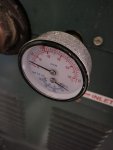slash007
Well-known member
I see people here that claim floor heat keeps them ice free down to 0 degrees. Mine only keeps it ice free until about 25 degrees. Below that it works, but ice will slowly start to build up and it definitely can't keep up during snow or ice. I'm going to attach multiple photos and hope to get your thoughts or suggestions on what I might be able to change to get it to perform better. Thanks.












Attachments
-
694.5 KB Views: 3
-
710.9 KB Views: 3
-
1.4 MB Views: 3
-
1.3 MB Views: 3







